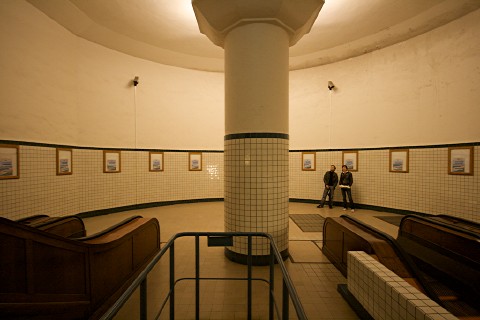Research on space & art.
 Three weeks ago, Alexander Schellow and I conducted a workshop called spatial research at the
Three weeks ago, Alexander Schellow and I conducted a workshop called spatial research at the advanced performance training
part of the apass school in Antwerp, Belgium. I was a bit anxious about the workshop, even though Alexander and I tried to prepare as well as we could for an open-ended and individualized workshop setting such as the one we offered for the people in Antwerp. I guess the anxiety stemmed from the fact that I did not have any experience in teaching artists and therefore was not sure if our interaction would be productive or not.
To my relief, the cooperation was great – two of my main qualifications (knowledge about social theories of space & spatiality on the one hand, experience with different ethnographic field-work settings on the other hand) were very useful for them and the participants really tapped me for all of the advice that I could give them. Of course, what they do with that advice is different when compared to people from a university setting. But there was more than enough overlap to make the experience highly stimulating for me too. As I posted on Facebook: Artist may not be the better sociologists, but they can be sociologesques with brilliant ideas!
To give you a bit more information to work with: One project posed the greatest difficulties but – exactly because of that – it also was the most productive for all involved. One of the students is interested in violence and bodily injury – so we decided that for the short time that we have for the workshop (about two days in the field) he might want spend some time in the entrance area of a hospital, to get a feeling for how physical pain, injuries and sickness embed themselves and are produced in a specific place. When he spent time in the area, he took photographs, which obviously got him into trouble quite quickly. But after a stressful encounter with the hospital staff, some attempts at repairing trust by Alexander and me, several talks about this, and the ritualized deletion of the pictures, the student/artist developed a really excellent presentation that very forcefully evoked a feeling of the place, of the presence and abscence of the place in his presentation, of the loss of the photographs, and of the ambivalence of privacy, voyeurism, pain and empathy. It was more than thrilling – and it was only one of the many really excellent projects that the participants came up with in only a week. In a way, one could say that this was a first encounter with non-representational theory made practice.
If you want to take a brief look at the some of the things that people came up with, you can check the description of the workshop on the web, where some of the projects are presented (the links to the individual projects are in the box on the left side of the page).
bonni
That sounds really exciting! Really curious to see / hear more of the artists' results. :)